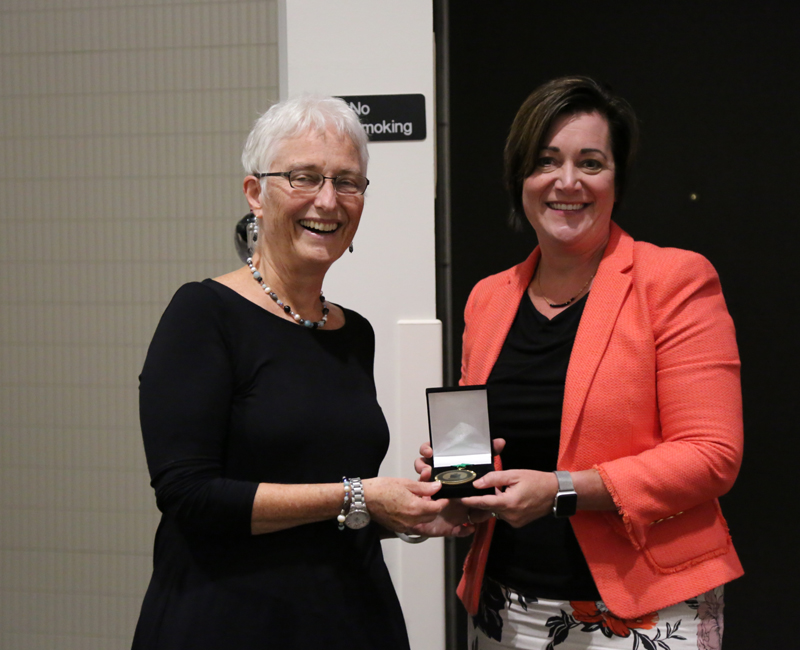Age-related macular degeneration was the topic at the UAB School of Optometry’s annual Springer Lecture, presented by the 2017 Springer Award Honoree, Christine Curcio, Ph.D., professor at the UAB Department of Ophthalmology.
Curcio gave her lecture, entitled “Age-related macular degeneration discovery through histologically validated multimodal clinical imaging,” to School of Optometry faculty and students on Sept. 28 in Volker Hall on the UAB campus.
The lecture is supported by the Nathaniel E. Springer Memorial Fund, which was established in 1999 to bring distinguished visual scientists or clinicians to the School of Optometry to share knowledge with faculty and students.
The fund was created by Donald Springer, O.D., who was instrumental in the founding of the School of Optometry and a leader in optometry in Alabama and the U.S. along with other members of the Springer family, in memory of Springer’s father Nathaniel E. Springer. Donald Springer died in 2011.
Curcio says she chose to speak about age-related macular degeneration (AMD) because clinical ophthalmic imaging has been her life’s work. Thanks to research and work with her collaborators, AMD is being made visible to clinicians at an ultrastructural level, she says.
“We’ve developed an accurate timeline of the disease, which helps focus efforts on what part it should be treated,” she says. “This is good news for patients with AMD. This prevalent cause of vision loss cannot be treated in 85 percent of the people who have it.”
She says the disease is complicated but approachable when all parts of it can be seen.
“Further, because neovascular AMD is treatable, a timely referral based on an accurate reading of OCT is essential for good patient outcomes,” she says.
Curcio says she was grateful to be selected as the 2017 Springer Award Honoree, to speak to faculty and students at the School of Optometry and to meet members of the Springer family.
“It was a delight and honor to be the 2017 Springer lecturer and to share all the good news about progress on age-related macular degeneration right here at UAB,” Curcio says.
Curcio has authored or co-authored more than 90 journal articles and has presented abstracts at vision meetings every year since 1985. She has presented about 150 invited lecturers at major meetings, congresses and universities in North America and Europe.
Her research has been funded by the National Eye Institute, Research to Prevent Blindness, International Retinal Research Foundation, Edward N. and Della L. Thome Memorial Foundation Awards Program, Arnold and Mabel Beckman Initiative for Macular Research, Macula Vision Research Foundation and industry.
Curcio received her undergraduate degree in biology from Brown University in 1972 and earned a Ph.D. in anatomy from the University of Rochester in 1981.
After post-doctoral work at the Boston University School of Medicine, she spent six years at the University of Washington in Seattle, where she began anatomical studies of the human retina that are now widely cited.
She joined UAB as a professor of ophthalmology in 1990.
